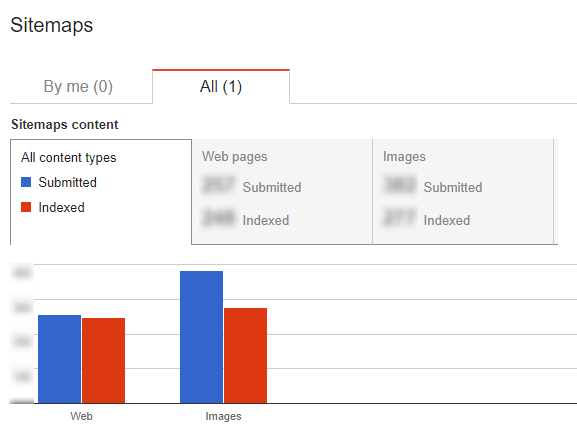
Consider factors like speed and mobile-friendliness when creating an on-page SEO checklist. Too many pages can cause users to be frustrated and will bounce off your website. Google PageSpeed Insights will give you a score and information about page loading speed. Your site should be mobile-friendly. This is critical because many people access the internet from their phones. You can find some great tips here to make sure your website is mobile friendly.
Relevance can be a ranking factor
Relevance is a key ranking factor for all web pages. It used to be that keyword stuffing was a guarantee to get better rankings. While keyword stuffing can still be effective, the method of placing them has changed. The use of keywords in the text of your page sends a relevancy message, but the placement is adjusted to give search engine a clear idea of what the content is about.

Ranking factors can include external links
You've likely noticed that external links play a significant role in optimizing your site's SEO. Although these links can help your site appear authoritative, they also give Google an idea of the content of your page. It's possible to get backlinks from websites if you write valuable content that other businesses will link. These external links can be used to your advantage.
Duplicate content is a ranking factor
Avoid duplicate content on your website. Search engines can only index one version and will remove duplicate content. Canonical tags can be used to tell search engines which version is most relevant to your site. You should include keywords in your title. Duplicate material will reduce your rankings.
Sitemap is an important ranking factor
A sitemap is an important part of a website’s on-page SEO strategy. It acts as a navigation tool and provides Google with a structure for your site. It should be updated with new content, but should not contain more than 50 thousand URLs or 50 MB. Moreover, it should be updated frequently, so that it's relevant to your site. But make sure that you have no more than one sitemap per page or else you'll end up with a bloated website.
Headers help organize your content
In addition to the headings on your webpages, use H1 tags to summarize your content. H1 tags allow you to organize your content, and include your most valuable keywords. The header tags are used by search engines to rank pages. Make sure to optimize these tags. Although H1 tags are just one aspect of an on-page SEO checklist they're an important part to SEO writing.

Keyword research is an important ranking factor
Research keywords relevant to your business or target market when you create content for your website. Although there are many keyword tools out there, it is important to start with your target audience. After all, they are the ones who will be searching for your content. You need to know their demographics, likes and pain points. Once you have these information, you can segment your target market by demographics and interests.
FAQ
How often do you need SEO?
If you maintain your links correctly, you don't necessarily need to update or perform SEO campaigns regularly. You could lose business if your links aren't maintained and you rely only on organic traffic.
For small businesses, it is recommended to update your SEO every month. If you are a larger company, it may be necessary to update your SEO every quarter.
SEO still considers link building relevant.
Link building will always remain essential. But how you approach it today is different than how others did it 10 or 20 years ago. The biggest challenge for any business today is how they find customers and make sales. Search engine optimization helps with this.
Nowadays, businesses need to use social media, and content marketing strategies are also very important. It seems that link building is not as effective as it once was because Google penalizes websites with too many links pointing back at them. This is because linking to multiple sites can lead to Google penalizing you.
All these factors mean that link building isn't nearly as valuable for ranking your website as it once was.
What is an SEO Campaign and How Does It Work?
An SEO campaign is a series of activities designed to improve the visibility of a particular webpage or domain name in search engines like Google, Bing, Yahoo, and others. These activities include optimizing page titles, meta description tags and URL structure.
Keyword research is a key part of SEO campaigns. This involves identifying keywords that are likely to increase organic traffic. Once keywords have been identified, they must be optimized throughout the entire website, from the homepage to individual pages.
What are different SEO strategies?
There are three types of SEO strategies: search engine optimization (SEO), Social Media Optimization (SMO) and Pay-per-click Advertising (PPC).
SEO is a way to optimize content for certain keywords through text formatting and HTML code.
This helps make sure your site appears higher on search results pages.
Social media optimization (SMO), on the other hand, is optimizing your website to be seen on social networks like Twitter, Facebook and Google+.
These online assets help to establish your brand reputation, which makes it more attractive for visitors searching for related topics.
PPC ads also appear at the top Search Results Pages, showing relevant products & services.
Google paid search advertisements are the most well-known type of PPC advertisement. These ads are expensive but extremely effective.
Other forms of PPC advertising include video ads, sponsored posts, and display ads.
Statistics
- 93%of online experiences today begin on search engines. (marketinginsidergroup.com)
- Sean isn't alone… Blogger James Pearson recently axed hundreds of blog posts from his site… and his organic traffic increased by 30%: (backlinko.com)
- A 62.60% organic traffic boost to that page: (backlinko.com)
- 64% of marketers actively create SEO campaigns because they help hit multiple key performance indicators (KPIs), including increasing traffic, helping your site rank for relevant keywords, improving your conversion rate, and much more. (semrush.com)
- : You might have read about the time that I used The Content Relaunch to boost my organic traffic by 260.7%: (backlinko.com)
External Links
How To
How do you set up your first blog?
It's simple! WordPress is a great tool to create a blog. It is easy to customize the appearance of a blog's appearance by changing the fonts and colors or customizing its layout. They can also add plugins that allow them to automatically change certain aspects of their website depending on visitor activity.
There are many free templates available on wordpress.org, as well as premium templates that you can purchase. Premium templates have additional features, such as more pages, extra plugins and enhanced security.
After you have downloaded the template, you will need to sign up to a free hosting account to upload your files to your blog and manage it. Although many hosts offer free accounts with limited space, there are restrictions on the number of domains that you can host, how many emails you may send, and how many websites you can upload.
If you decide to use more than one domain name, you'll also need to buy separate email addresses. This service is offered by some hosts at a monthly charge.
It's easy to wonder why someone would pay to host a blog online, especially if you're just starting out with blogging. Most hosts offer unlimited storage space, meaning your files won't be deleted even if you accidentally delete them.
Hosting providers often allow multiple domain hosting, so you can have many sites from the same package. It is possible to avoid multiple email accounts by registering for one interface, allowing you to manage all of your sites from the same place.
Some hosts include social media sharing icons on their dashboards. This allows visitors share posts easily across the internet.
Most hosting companies offer tools for managing your blog. You can view your site's performance stats, see how many visits each post has received, and compare your traffic against similar blogs.
These tools can make managing your blog easier and faster, so they're worth checking out before you choose a hosting plan.
To sum up:
-
You can choose a topic related to your business.
-
Create engaging content;
-
Optimize your site using SEO techniques;
-
Promote your site using social media channels;
-
You can monitor your statistics and make adjustments if necessary.
-
Remember to update your blog regularly.
You should create high-quality content, market it effectively, and monitor its success.